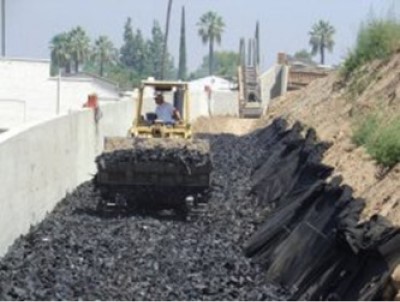In the United States, about 200-300 million tires are scrapped annually. Many of them had been stockpiled in landfills, which caused serious public health problems as well as environmental issues. These days, most developed countries prohibit legal and illegal stockpiling of scrap tires and promote recycling and recovering materials. Tire Derived Aggregate (TDA) is an engineered product made by cutting scrap tires into 5 to 450mm pieces to be used in civil engineering applications as lightweight aggregates. Unfortunately, seismic issues related with TDA backfill have not been addressed thoroughly since the development of TDA in the 1990's. The distinct mechanical properties of TDA from conventional backfill materials, particularly lightweight and compressibility, must be factors that influence seismic behavior of retaining walls.
The present research aims at establishing a reliable foundation for seismic design and assessment of TDA backfilled retaining walls through numerical and experimental investigations. During the scheduled shake table, a pre-built Caltrans Type 1 Semi-Gravity Reinforced Concrete Cantilever Wall (2.2m high) will be placed in the large soil box (2.85 x 6.7 x 3.66 meter) on the shake table. As backfill, 1.5m thick Type B TDA will be deposited and compacted. On the top of the TDA layer, a 0.6m thick sand layer will be built. Displacements, accelerations, strains, and soil/TDA pressures of the wall and backfill will be measured under various dynamic loads including the Northridge earthquake strong motion. The comparison of responses between conventional backfill and TDA would exhibit advantages and disadvantages of TDA backfill.

Investigators
| PI | Lijuan Cheng | University of California Davis |
| Researcher | Il-Sang Ahn | University of California Davis |
Contact Person
Dr. Lijuan "Dawn" Cheng
dawcheng@ucdavis.edu